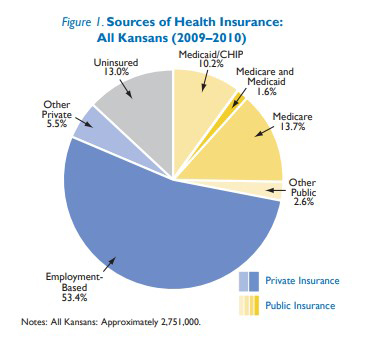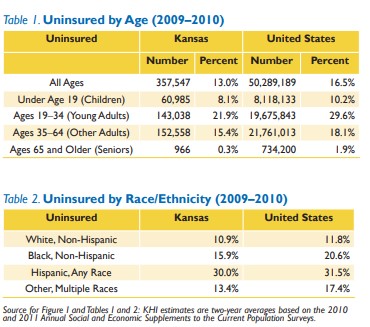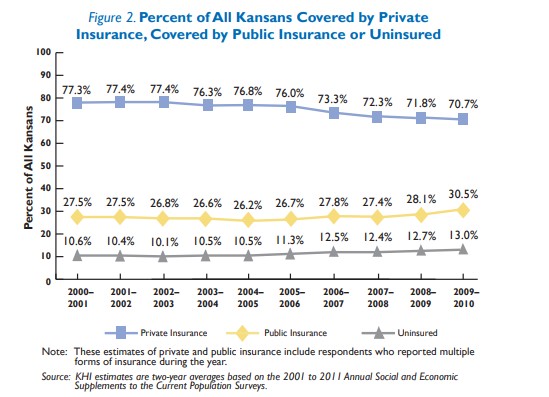
New Information from the U.S. Census Bureau’s Current Population Survey for 2009‒2010.
-
- The percentage of Kansans without health insurance in 2009–2010 — 13.0 percent — is significantly lower than the national rate, which stands at 16.5 percent.
- In 2009–2010, the majority of uninsured Kansans — 59.5 percent — were adults 19 or older who worked full-time or part-time. The following four changes, while notable, were not statistically significant:
- The percentage of Kansas children (under 19) without health insurance in 2009–2010 was 8.1 percent, compared with 10.0 percent in 2008–2009 and 9.6 percent in 2007–2008.
- The percentage of young adults (19-34) without health insurance in 2009–2010 was 21.9 percent, compared with 22.1 percent in 2008– 2009 and 21.9 percent in 2007–2008.
- Approximately 357,500 Kansans lacked health insurance in 2009–2010. That compares with about 347,000 Kansans in 2008–2009 and about 338,000 Kansans in 2007–2008.
- The percentage of Hispanics in Kansas without health insurance was 30.0 percent in 2009–2010, compared with 35.8 percent in 2008–2009.
- Obtaining private health insurance, through an employer or an individually purchased policy, continues to become less common in the United States and Kansas. In 2009–2010, 70.7 percent of all Kansans were covered by private health insurance, compared with 77.3 percent in 2000– 2001.
- At the same time that private health insurance coverage is becoming less common, coverage from publicly funded sources continues to increase. In 2009–2010, 30.5 percent of all Kansans were covered by some type of public health insurance, compared with 27.5 percent in 2000–2001. Public health insurance includes Medicare, Medicaid, Children’s Health Insurance Program (CHIP) and military coverage.
- Without this substitution of public health insurance for private health insurance, the rate of uninsured Kansans likely would have increased even more during the last decade. The percentage of uninsured Kansans has increased from 10.6 percent in 2000– 2001 to 13.0 percent in 2009–2010.


